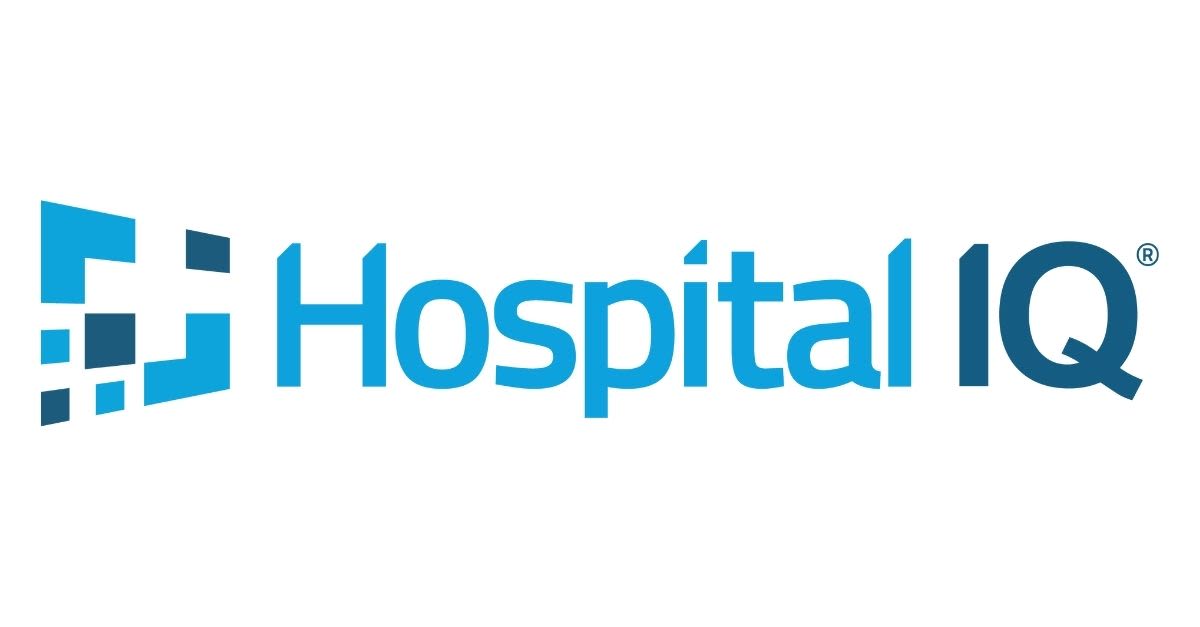Upending Stereotypes of Nursing Operational Priorities, Abilities

Prior to the advent of nurses in operational leadership roles, operational decisions in healthcare were made by financial and business executives, as well as physicians, without full and adequate input from nursing. Today, nurses have earned their place at the management table as a vital part of the outcomes of patients and to the optimal performance of healthcare institutions. Still, the feeling that nurses understand patient care but do not understand business can still persist at times.
In hospitals and health systems, the first nurse managers ascended to operational leadership because they were strong staff nurses whose actions demonstrated expertise in clinical care and whose voices were recognized as an important component of quality of care, patient safety, and the patient and family experience. As hospital consolidation started in the 1990s, the need to standardize operations, systems, and care processes expanded the responsibilities of hospital managers at all levels to take on organizational strategy and fiscal responsibility.
Clinical operations managers at all levels face ongoing challenges in a constantly changing world: balancing the struggle of providing exceptional patient care, improving the experience of staff as they do their work every day, and remaining profitable. While a strong staff nursing background is still extremely relevant to the role, managers must also understand the financial and business operations of healthcare and have the capability to effectively communicate financial and business concepts.
To prepare for an effective clinical operational leadership role working alongside non-clinical executives, graduate leadership and financial education is essential. Today’s clinical operations leaders typically require a bachelor’s degree in nursing, and they often hold a master’s degree in nursing or a related field like business or health administration. At the nurse executive or chief nursing officer levels, most organizations are also requiring a doctor of nursing practice, PhD, or doctor of nursing science. According to the American Association of Colleges of Nursing, transitioning advanced registered nursing programs from the graduate level to the doctoral level is “a response to changes in health care delivery and emerging health care needs, and additional knowledge or content areas have been identified by practicing nurses. In addition, the knowledge required to provide leadership in the discipline of nursing is so complex and rapidly changing that additional or doctoral level education is needed.”
Distinguishing managerial types
In my experience, there is an accepted distinction between the role of a nurse manager versus a clinical operations manager. While nurse managers oversee staff, they make decisions around patient care initiatives. Clinical operations managers, on the other hand, are not typically involved in direct patient care. Their role is focused on managing the daily operations of a division or department and supervising staff. As such, they must understand the business side of healthcare management. It should be noted that while this is an ideal model, in today’s reality of nursing shortages, clinical operations managers are often still called upon to deliver care.
Beyond having a medical background, there are varying views of the characteristics of a good clinical operations leader. The nursing master’s program at Benedictine University in Lisle, Illinois, offers a breakdown on leadership skills every nurse leader must have that is extremely relevant. It describes the following eight traits that nurses need to become future leaders in today’s healthcare environment:
1. A global mindset. You should be able to respond effectively to worldwide healthcare trends and adapt them to your work on a national, regional, or local level.
2. A working knowledge of technology. This is imperative in order to operate an efficient healthcare service; you will need to support it with the right technology.
3. Expert decision-making skills. Decisions in complex environments such as healthcare can often be hard to judge. The process of decision-making needs to be aligned throughout the organization.
4. Prioritizing quality and safety. You must maintain a focus on patient and worker safety by adopting innovative approaches and integrating them into the daily processes of your division or department.
5. Being politically astute. You need to make the right political decisions to succeed, including the ability to identify the finer details of relationships, communication, and informal power structures within your organization.
6. Collaboration and team building skills. Good leadership is all about creating good working relationships, identifying a common purpose, and working together cooperatively. Mentoring, clear communication, and conflict management will help you achieve the right balance.
7. Balancing authenticity and performance expectations. In your role as a clinical operations leader, you are likely to be faced with reaching targets and meeting budgets. By always being an authentic nurse leader, you place the patient first.
8. Coping with change. Today’s healthcare organizations face continual change in the form of organization restructuring, quality improvement, and employee retention. As a nurse leader, you will need to embrace change, adapt to it, and, in doing so, re-energize and empower the workforce.
Distinguishing data sources
As you embark on a new role as a clinical operations manager, one of your earliest tasks will be to identify the reliable data sources you need to understand current operational performance and make recommendations for change. You will need to identify existing key performance indicators, analyze current performance in relation to those metrics, and plan and execute new initiatives to improve or sustain operational excellence. You will find there are thousands of data elements across multiple existing clinical and operational IT systems that are integral to data-driven decision making, such as:
• Electronic health records, which provide a central repository of countless data elements.
• Surgical scheduling systems, which help manage patient care through the surgical process through scheduling, documentation management, and reporting tools.
• Staffing systems, which often provide unit-based strategies but lack enterprise-level transparency.
• Ad hoc data, which is always in the mix. (I am confident that anyone in clinical leadership can recall the myriad of information that is found only on sticky notes, written on printouts, kept in binders or on spreadsheets, or is even just a part of someone’s mental checklist.)
Depending on your institution, you will find various levels of investment in a range of tools to address performance improvement or operational excellence such as consulting, electronic medical record customizations, in situ PI/OE initiatives, homegrown systems, adjustments to legacy systems, and various committees. Still, you will often find frontline staff making on-the-fly adjustments to respond to immediate challenges because that is the way they have always done it. You may also face frustrated staff that have tired of ongoing, and often repetitive, initiatives and find that operational performance challenges continue to hinder your health system’s bottom line. It is your job to demonstrate, with data and transparency, the what, why, and how of your recommendations in order to get team buy-in and ensure your improvements stick.
With the ever-present challenges of pinched revenues, increased expenses, and staff shortages, it is incumbent on operations managers to balance doing more with less. Manual methods are just not feasible anymore. By embracing new technologies, clinical operations leaders (both new and experienced) can truly set themselves and their hospitals apart as visionary models in the field. This data-driven approach and transparency will help you cultivate a culture in which everyone feels confident in the approach and works towards the same goal.
During my time as a consultant at PwC, I discovered the advent of intelligent automation in healthcare as a new way to transform hospital operations. These systems combine artificial intelligence, workflow automation, and a transparent communication platform to keep everyone, both clinical and non-clinical staff, in the loop. In my experience as a nurse executive, breakdowns in communication were what often had lasting chain-reaction effects, causing patient pre-procedural requirement delays, leaving ORs unused and wasted, and causing recovery rooms to be overbooked and crowded. When you have a holistic hospital operations management platform, everyone has the insight and foresight to see what is coming, visualize operations in real time, and instantly know what role they need to fulfill to optimize operations. In the perioperative suite, this type of platform delivers advanced notice of potential barriers throughout the preoperative, intraoperative, and postoperative pathways to drive and sustain improvements.
Optimize the right way
The OR is a complex area that delivers clinical care, but it is also a business unit that is highly regulated. Industry statistics regularly report that ORs generate approximately 60% of a hospital’s revenue, as well as 60% of its expenses. It is easy to see why the OR is a particular area that requires significant attention to maintain volume and control costs.
Manual processes and siloed information will not be able to provide you with real time data, insight into the future, or recommended prioritized actions that need to be taken. This is an area where I have found technology to be most useful and that can bring new life to your health system’s operations. As a new clinical operations leader, deploying an effective digital transformation strategy in your organization allows you to constantly monitor current and future operations and receive real-time actionable data. In healthcare settings, this use of intelligent automation is an emerging discipline that analyzes and synthesizes your data so that you can confidently align actions and priorities across your enterprise. With the right digital strategy, you can put yourself in a position to acknowledge specific problem areas, confidently remediate challenges, and get proper care team alignment.
I have written and consulted extensively on OR operations improvement and formulated several strategies and recommendations where intelligent automation can be used to drive sustainable long-term performance improvement in the perioperative suite:
• Optimize block release lead time. Predictive analytics tools suggest strategically releasing time that will likely go unused based on historical behavior. This helps blockholders improve their own performance metrics, while also giving OR leaders ample lead time to fill that block with other cases.
• Increase OR schedule transparency. A virtual marketplace platform gives OR schedulers awareness of which surgeons have a case to schedule, and it gives surgeons visibility of available time. Making schedule transparency a part of your perioperative culture improves utilization, and increased case volume becomes self-sustaining.
• Block management in real-time—equip schedulers with efficient tools. Tech-savvy tools support OR schedulers in managing the blocks and the OR schedule. With an operations management platform, requests for time are organized in a single place and priority ranked to identify the best matches for time based on organization policies and initiatives.
• Holistic perioperative management. Using digital tools allows you to take a dynamic approach to schedule management, including prescriptive recommendations for block schedule optimization and substantiating block reallocation. Monitoring the right metrics while using technology to streamline processes, workflows, and access to data creates a shift to a more dynamic, fluid approach to managing the entire perioperative continuum that will drive sustainable change.
Technology that supports the care experience, eases workloads, and enables collaboration between cross-functional teams is central to effective and sustainable performance excellence. As a former hospital nurse executive, and now as a consultant on clinical and hospital operations, I am enthusiastic about intelligent automation advances available to clinical operations managers today. In the areas of communication, collaboration, and resolving conflict, data-driven decisions that are transparent to everyone can support your recommendations, show each person the impact of their role, and remove any ambiguity in resolving disagreements.
Technological advancements that support optimized healthcare operations improve both patient care and the business health of the enterprise, upending the long-held stereotypes of nurses’ operational priorities and abilities. When you can make life easier for nurses, head off crises before they occur, measure and report on key operational performance indicators, and deliver transparency that keeps everyone on the same page, you will quickly become a trusted advocate for your team and a respected operational leader in your enterprise.

